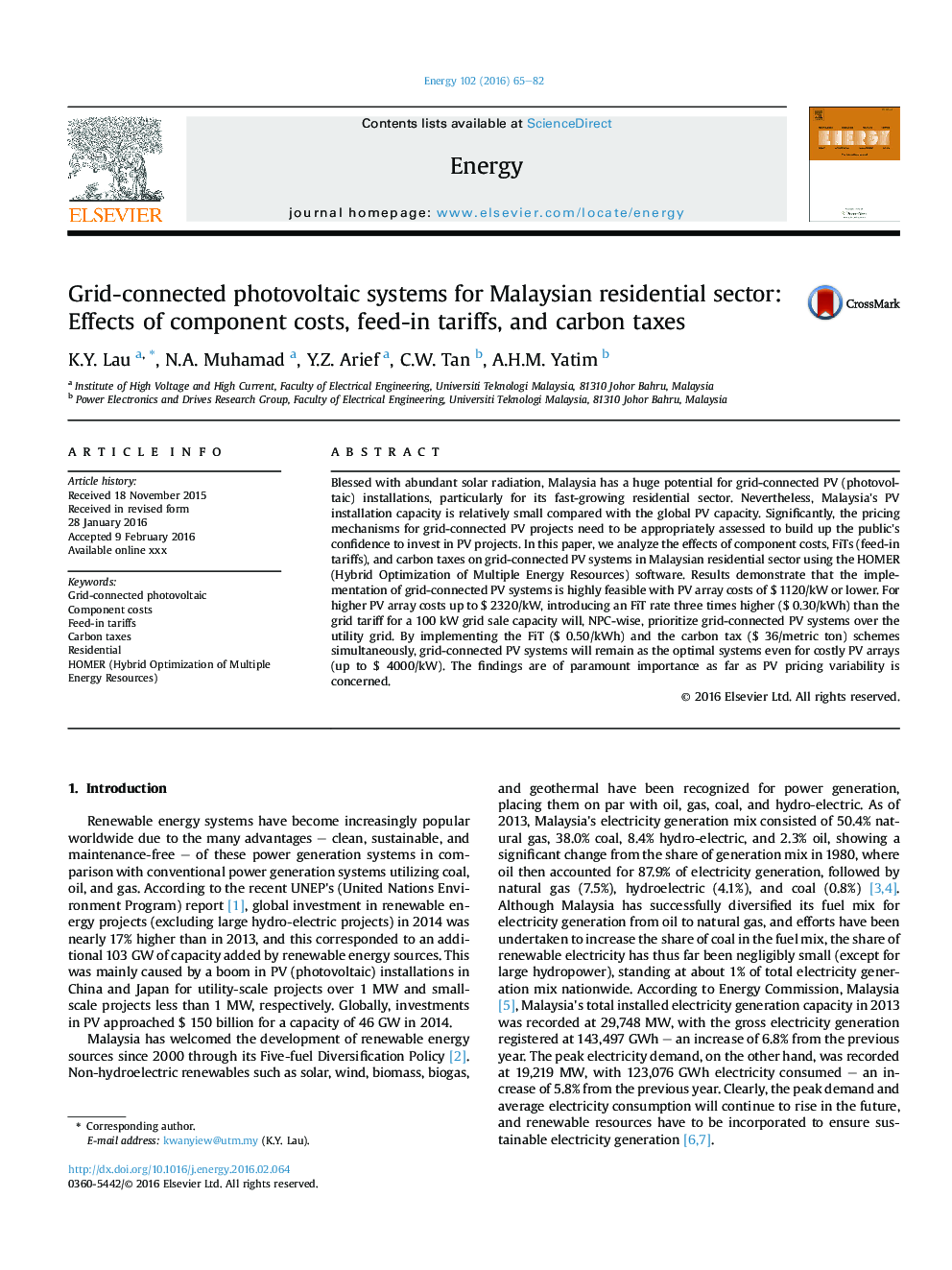| Article ID | Journal | Published Year | Pages | File Type |
|---|---|---|---|---|
| 8073970 | Energy | 2016 | 18 Pages |
Abstract
Blessed with abundant solar radiation, Malaysia has a huge potential for grid-connected PV (photovoltaic) installations, particularly for its fast-growing residential sector. Nevertheless, Malaysia's PV installation capacity is relatively small compared with the global PV capacity. Significantly, the pricing mechanisms for grid-connected PV projects need to be appropriately assessed to build up the public's confidence to invest in PV projects. In this paper, we analyze the effects of component costs, FiTs (feed-in tariffs), and carbon taxes on grid-connected PV systems in Malaysian residential sector using the HOMER (Hybrid Optimization of Multiple Energy Resources) software. Results demonstrate that the implementation of grid-connected PV systems is highly feasible with PV array costs of $ 1120/kW or lower. For higher PV array costs up to $ 2320/kW, introducing an FiT rate three times higher ($ 0.30/kWh) than the grid tariff for a 100 kW grid sale capacity will, NPC-wise, prioritize grid-connected PV systems over the utility grid. By implementing the FiT ($ 0.50/kWh) and the carbon tax ($ 36/metric ton) schemes simultaneously, grid-connected PV systems will remain as the optimal systems even for costly PV arrays (up to $ 4000/kW). The findings are of paramount importance as far as PV pricing variability is concerned.
Related Topics
Physical Sciences and Engineering
Energy
Energy (General)
Authors
K.Y. Lau, N.A. Muhamad, Y.Z. Arief, C.W. Tan, A.H.M. Yatim,
